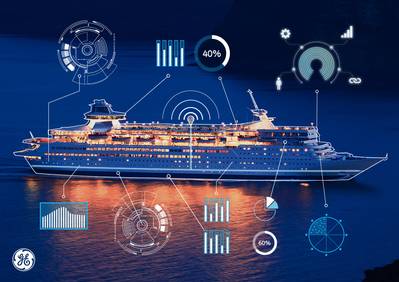(Blog from GE's Power Conversion business)
Cruise shipping is one of the fastest growing sectors in tourism. The Cruise Lines International Association (CLIA) predicts that over 24 million passengers will take a cruise in 2016 and that CLIA member lines will match this with more than a $6.5 billion investment in new ocean-going ships.
However, in the past few years, the industry has not always hit the headlines for the right reasons. Negative environmental stories, brand damage, revenue loss and sometimes even incidents costing passenger lives, have prompted the U.S. Senate to review safety, security and environmental practices in the cruise industry.
How does the cruise industry step up to tackle these issues? And how can technology developments contribute to the future success of the industry?
Challenging upgrades
In order to sustain this growth, cruise operators need to ensure that incidents are a thing of the past. A focus on maintenance and timely upgrades certainly contributes. According to regulatory standards, cruise ships need to be dry docked every three to five years for a major maintenance and overhaul cycle. This can be hugely expensive; cruise ships do not make money unless they are operating. The revenue loss, when you consider that the largest ships on order accommodate more than 6,000 passengers, can be significant. In addition, upgrades and refurbishment costs themselves are substantial.
The financial impact of upgrades can be a real challenge for some operators. In some cases, operators may even choose to sell the ships rather than upgrade them.
Unplanned downtime, such as that caused by a system failure, poses an even greater financial burden on operators. In addition to the costs of repairing a system failure, operators can incur additional revenue loss from the damage done to brand reputation.
Better maintenance and service
The high costs mean it’s crucial for the turnaround time to be as short as possible. GE’s Marine Solutions’ real-time simulator is specifically designed to secure electric propulsion upgrades and therefore dedicated to reducing this upgrade time. It can simulate various changing environments and therefore test and validate new hardware and software architectures around converters, power plants and propulsion systems. This allows equipment to be fine-tuned in advance, leaving little commissioning work to be done by systems engineers on a ship. Ultimately, this shortens the time that the ship spends in dry dock.
Moreover, in the past, GE’s Marine Solutions has equipped more than 60 ocean-going cruise liners. Worldwide, GE has over 200 service engineers ready to support clients whenever and wherever necessary, 50 of which are based in the North American region. A local warehouse in the Gulf region also allows fast service for spare parts.
The future is digital
The use of digital software analytics can promise an even more prosperous cruise era.
Imagine having instant access to a holistic view of the ship, real-time data of weather patterns and currents and other parameters which lead to better operational decisions and optimized fuel efficiency. This is not all. The intelligent software analytics aboard the cruise can show if a certain part of the vessel is exhibiting wear—the alert, delivered straight to the central control room, informs if it is likely to fail in the coming months. The operator can, therefore, adjust the system to decrease usage of the part, avoiding potential damage and extending the maintenance cycle.
Such visibility might sound like wishful thinking, but much of the technology is readily available today.
Made possible by GE’s SeaStream* Insight, the powerful software is shedding new light on data and is set to help optimize the industry by enabling data-driven efficiency. Instead of just using data for post-incident analysis, SeaStream Insight can truly harness the power of data and help provide “predicitivity” to vessel operators.
A digital model, called “the digital twin,” can be built based on years of a cruise vessel’s data history. By comparing asset to asset and vessel to vessel from “the digital twin,” the software is able to search for anomalies and give early warnings of a potential failure, enabling the industry to shift from planned to condition-based maintenance. This predictivity is what can make a real difference to cruise owners, operators and passengers, as it can help save the industry from potential incidents, reduce downtime and offer significant cost savings.
It’s not science fiction; the industry has evolved. Progressing towards a whole new digital cruise era, future cruise vessels are set to become safer and more efficient.
* Indicates a trademark of the General Electric Company and/or its subsidiaries.












